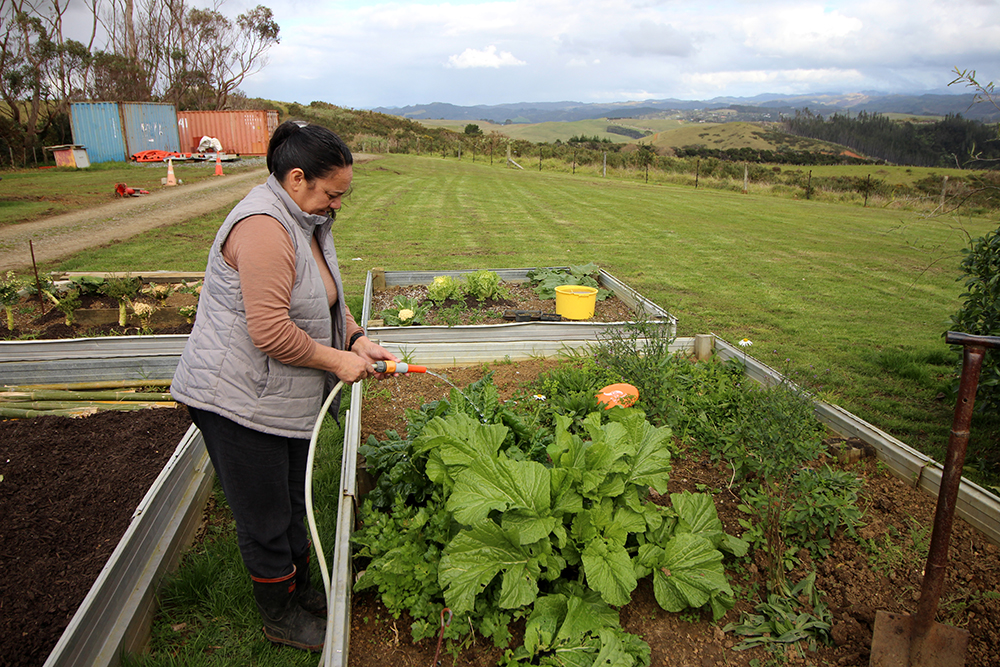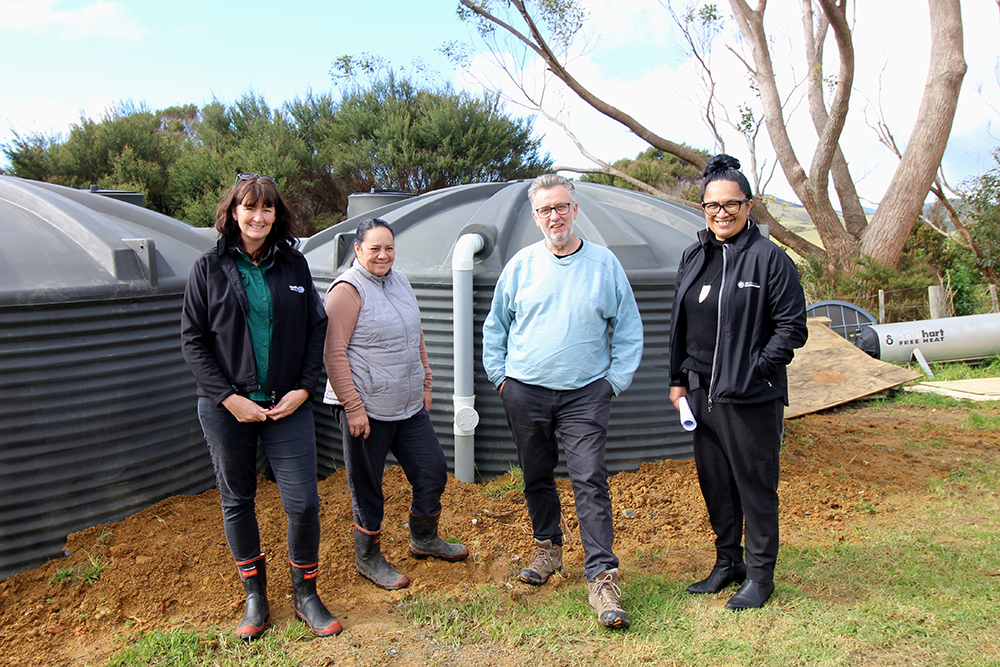Case study 1 - Tūtū Te Wai
Te Rūnunga o Whaingaroa (TRoW) was one of the first recipients of the Northland Regional Council (NRC) Water Resilience Fund.
For many hapori (communities) throughout Te Taitokerau, the droughts of 2019/20 coupled with COVID, compounded the pressures for whānau living on whenua without access to public water supply. Ongoing issues of inadequate storage and collection mean many whānau still have to rely on local water companies at a cost of around $500 per delivery or the unsustainable and expensive solution of buying bottled water. The financial and wellbeing stress of wai-insecurity has added to the existing challenges many of these community’s face.
The partnership established between NRC and TRoW to provide much needed water infrastructure has been successful as it relies on a process led by the community. The strong local knowledge and relationships held by TRoW kaimahi (staff) working alongside whānau, means that the kawa (policy) for the project are written by the recipient. The ‘flax-roots’ led outcome is a strong wai-resilience solution that works for that location.
At Taemaro in the Whangaroa rohe, Sandra Heihei was involved in receiving 2 tanks for whānau at Puketūtū and says that “the project is about empowering our people. Mana motuhake (self-determination) is a huge thing and when you can have a simple resource like water that can do that it, it makes huge changes”. Sandra says “the tanks are now a Puna (spring)” for her community, and that families now call in to fill their containers and water bottles at what has become a little central village or kainga for the people.
Since Tūtū Te Wai began in February 2022, water resilience has improved in eight Whangaroa communities. The project installed 24 water tanks across the rohe, improved infrastructure to collect precious rainwater, and upgraded the Te Tii Wai plant. The result is over 300 people in 90 homes and 2 marae now have secure access to clean drinking water. TRoW Poutāri (Manager), Jackie Edwards-Bruce has seen positive changes for whānau health and well-being in homes and the community and when looking ahead to potential future droughts, this helps to reduce stress on whānau.

The water tanks now keep the Māra Kai at Puketūtū growing and helps build resilience on the whenua.

Water tank installations at Taemaro as part of the Te Rūnanga o Whaingaroa Tūtū Te Wai project.
